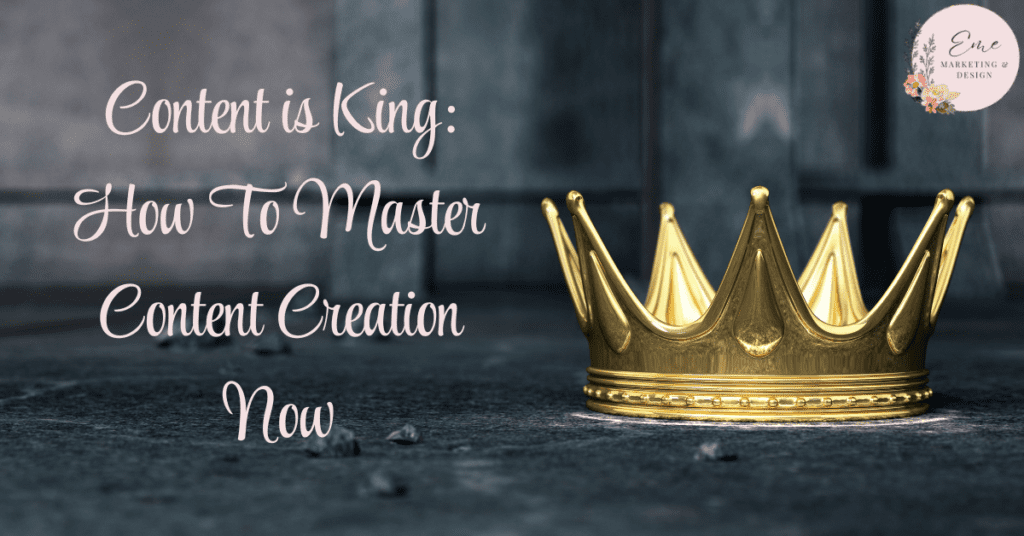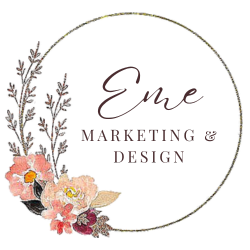
In today’s digital age, where consumers are bombarded with information from every direction, creating compelling content has become a crucial aspect of any successful business strategy. From social media posts and blog articles to videos and podcasts, content has emerged as the cornerstone of engaging with and retaining customers. In this blog, we’ll explore why content is king in the realm of modern marketing and how you can master the art of content creation to propel your business forward.
Understanding the Power of Content
The phrase “Content is King” has become a mantra in the world of marketing, and for good reason. Quality content serves as the foundation of building brand awareness, establishing authority, and fostering relationships with your target audience. Unlike traditional advertising, which interrupts consumers with sales messages, content marketing focuses on providing value and building trust over time.
One of the key advantages of content marketing is its ability to reach consumers at various stages of the buyer’s journey. Whether someone is just discovering your brand or is on the verge of making a purchase decision, well-crafted content can guide them along the path to conversion. By delivering relevant and insightful content, you can position your business as a trusted resource and influence purchase decisions in your favor.
The Elements of Effective Content
Creating content is more than just putting words on a page or images on a screen. Effective content is strategic, purposeful, and tailored to the needs and preferences of your target audience. Here are some key elements to consider when crafting content for your business:
- Know Your Audience: Before you start creating content, take the time to understand your target audience. What are their pain points, interests, and preferences? What questions do they have, and how can your content provide solutions or answers?
- Set Clear Goals: Define what you hope to achieve with your content. Whether it’s increasing brand awareness, driving website traffic, or generating leads, having clear objectives will guide your content creation efforts and help you measure success.
- Be Authentic: Authenticity is crucial in today’s digital landscape. Consumers are savvy and can easily spot inauthentic or overly promotional content. Instead, focus on being genuine, transparent, and humanizing your brand through storytelling.
- Provide Value: Your content should offer something of value to your audience, whether it’s educational information, entertainment, or inspiration. Think about how you can help your audience solve problems, learn something new, or feel connected to your brand.
- Optimize for Search: Incorporating relevant keywords and optimizing your content for search engines can help improve its visibility and attract organic traffic. However, avoid keyword stuffing and prioritize creating content that is valuable to your audience first and foremost.
- Use Visuals: Visual content such as images, infographics, and videos can enhance the effectiveness of your message and make it more engaging for your audience. Experiment with different types of visual content to see what resonates best with your audience.
Types of Content to Consider
When it comes to content creation, there is no one-size-fits-all approach. Depending on your industry, target audience, and business goals, you may want to experiment with different types of content. Here are some popular formats to consider:
- Blog Posts: Blogging is a versatile and cost-effective way to share valuable content with your audience. Whether you’re providing industry insights, sharing how-to guides, or discussing trending topics, blog posts can help establish your authority and attract organic traffic to your website.
- Social Media Posts: Social media platforms offer a variety of formats for sharing content, including text posts, images, videos, and stories. Experiment with different types of content to see what resonates best with your audience on each platform.
- Videos: Video content continues to grow in popularity, with YouTube leading the way. Whether it’s product demos, behind-the-scenes footage, or customer testimonials, video content can help humanize your brand and engage your audience on a deeper level.
- Podcasts: Podcasting has emerged as a powerful medium for storytelling and thought leadership. Hosting your own podcast allows you to share industry insights, interview experts, and connect with your audience in a more personal way.
- Infographics: Infographics are a visually appealing way to present complex information in a digestible format. Whether you’re summarizing key statistics, explaining a process, or showcasing a timeline, infographics can help grab your audience’s attention and communicate your message effectively.
- Ebooks and Whitepapers: Longer-form content such as ebooks and whitepapers are ideal for providing in-depth information on a particular topic. By offering valuable insights and actionable advice, you can position your brand as a trusted authority in your industry.
Tips for Effective Content Creation
Now that we’ve explored the importance of content and the various types of content you can create, let’s delve into some practical tips for mastering the art of content creation:
- Maintain Consistency: Consistency is key when it comes to content creation. Whether you’re publishing blog posts, posting on social media, or releasing podcast episodes, establish a regular cadence that aligns with your audience’s expectations.
- Repurpose Content: Don’t be afraid to repurpose existing content into different formats or update and refresh older content to keep it relevant. For example, you can turn a blog post into a podcast episode, create social media graphics based on key takeaways, or compile a series of blog posts into an ebook.
- Engage with Your Audience: Encourage feedback, comments, and conversations with your audience to foster engagement and build a sense of community around your brand. Respond to comments, ask questions, and solicit input to make your audience feel heard and valued.
- Monitor Performance Metrics: Track key performance metrics such as website traffic, engagement metrics, and conversion rates to measure the effectiveness of your content efforts. Use this data to identify what’s working well and where there’s room for improvement.
- Stay Up-to-Date with Trends: Keep an eye on industry trends, news, and changes in consumer behavior to stay relevant and adapt your content strategy accordingly. Experiment with emerging formats and platforms to stay ahead of the curve and reach new audiences.
- Continue Learning and Experimenting: The world of content creation is constantly evolving, so don’t be afraid to experiment, learn from your successes and failures, and adapt your approach over time. Stay curious, seek inspiration from other creators, and never stop refining your craft.
Final Thoughts
In today’s digital landscape, content has become the cornerstone of effective marketing strategies. By creating valuable, relevant, and engaging content, businesses can attract and retain customers, establish authority in their industry, and drive meaningful connections with their audience. Whether it’s blog posts, social media updates, videos, or podcasts, mastering the art of content creation requires a strategic approach, creativity, and a deep understanding of your target audience. By incorporating the tips and best practices outlined in this blog, you can harness the power of content to propel your business forward in the digital age. Remember, content is king, and with the right strategy and execution, you can reign supreme in your industry.




